Everything You Need to Know About AcroYoga + 5 Beginner AcroYoga Poses

Most of us have seen those amazing AcroYoga photos on the internet, and have probably tried a few AcroYoga poses with our friends. But do you know the origin of this popular yoga style and how it grew to be what it is today?
AcroYoga as we know it now, combines acrobatics, yoga and even healing/therapeutic practices. AcroYoga focuses on the trust elements of acrobatics, the compassion elements of therapeutics, and the mind-body connection element of yoga to form a yoga style unlike any other.
A Brief Look at AcroYoga Through the Years
The practice of AcroYoga has been documented as far back as 1938 with T. Krishnamacharya, who is known by many as the “Father of Modern Yoga,” basing a young yogi. The video shows Krishnamacharya assisting a young yogi with a few backbending variations ranging from more therapeutic backbends to more deep and intense poses.
In the 1980’s, Benjamin Marantz created the yoga style known as AcroSage to help relieve his pain from a back injury. He found that both massage and inverted therapeutic techniques to be the most beneficial to relieve the discomfort from his injured spine.
AcroSage became the leader in inversion therapy and was a starting point for many of the basic flying transitions we see today in AcroYoga.
In 1999, the name AcroYoga was first used in Canada by Euguen Poku and Jessie Golderg with AcroYoga Montreal. The two began their journey together in dance, then reworked their routine to include acrobatics and yoga. The blend became known as AcroYoga Fusion and it captivated many audiences around the world.
In 2003, AcroYoga International was founded by Jason Nemer and Jenny Sauer-Klein.
They were the first to classify much of the AcroYoga terms we use today and to easily blend acrobatics and yoga. They even went on to create a training program to equip yoga teachers to safely teach AcroYoga to students around the world.
AcroYoga Terms and Language
No matter what style of AcroYoga you practice, there are basic terms used by all practitioners to make communication effective and to keep everyone safe. Below are some of the terms you will hear during an AcroYoga session:
Base: The base is the person on the bottom with their back firmly on the mat. The base creates the foundation for the AcroYoga poses.
Flyer: The flyer is the person elevated by the base. The flyer will also need strength and balance for a successful practice.
Spotter: The spotter provides support for the base and flyer. The spotter helps to improve form or keep everyone safe should they fall.
Circle Ceremony: The circle ceremony takes place as a group before practice begins. The circle ceremony promotes communication and oneness within the group through conversation, breathwork, or a group AcroYoga practice.
Partner Flow: A partner flow is practicing AcroYoga between two people. The poses help both practitioners to stretch, to have better communication and build a sense of compassion for each other.
Partner Acrobatics: Partner acrobatics requires more technique, skill, and practice. The use of a spotter is needed as the base and flyer begin to practice more difficult poses and transitions.
Therapeutic Flying: Therapeutic flying focuses on the flyer. The flyer practices AcroYoga poses that will use gravity to help elongate the spine, stretch, or even massage the body.
Follow These Tips to Stay Safe During Your AcroYoga Session:
1. Have a Spotter You Trust
It’s tempting to try AcroYoga poses with your bestie and not have a spotter. But trust us, finding a third person to practice with is a must. Not only is the spotter there for safety, but to help you figure out the poses and correct alignment as well.
Also, be sure the person acting as the spotter is communicating with the base and flyer so they know what to expect and what to look for.
2. Use Open Communication at All Times
Communication is key to a successful AcroYoga practice. The base, flyer, and spotter need to be in constant discussion about how everyone is feeling, and what their intentions are in the pose.
Communicating during transitions (including coming in and out of poses) is extremely important to ensure a safe and fun practice. The more communication there is between the yogis, the less amount of injuries.
3. Always Warm Up
Just like any physical activity, a warm up is needed before practicing AcroYoga. Luckily, your warm up can be anything you want. Practicing a few Sun Salutations is a great way to get your blood moving and your body warm.
Also, adding a few stretches before your AcroYoga session will help keep your body healthy and injury free. Not only will a good warm up keep your body safe, it will help you to have a more successful practice.
4. Take an Honest Self-Assessment
It’s time to get real. Being completely upfront and open about how you feel that day, what your skill level is, and what you would like to practice is very important in AcroYoga.
Communicating with your partner if you’re feeling tired after a long session or not ready to try a new transition is essential to everyone’s safety. Always take a minute to tune into how you’re feeling and never be afraid to speak up.
5. Smart Progression
Brand new to AcroYoga? Great! Want to try standing hand to hand work on your first day? Not so great.
Like your yoga practice on the mat, AcroYoga is all about slow and smart progression. It’s important to learn the basics and build a solid foundation of communication with your partner before attempting advanced poses. Revisit your honest self-assessment to see if you are ready to progress.
Ready to Give it a Go? Check Out These 5 Beginner AcroYoga Poses:
Keep the above tips in mind as you move mindfully through these AcroYoga poses with your partner, and have fun!
1. Front Bird Pose
Front Bird is a great AcroYoga pose for beginners because the yogis are more stable with their hands clasped and their shoulders and hips stacked to create a more solid foundation. The transition into this pose is great practice for the flyer to keep their body fully engaged and the base to learn how to balance the flyer.

Let’s try it:
- The flyer begins facing the base at the back of the mat
- The base places their feet on the flyer’s hips. If the base has very tight hamstrings, they can place a blanket or bolster under their hips to give them more range of motion during your practice
- The flyer connects hands with the base and leans slightly forward to transfer their weight onto the base’s feet
- Be sure the flyer keeps their entire body fully engaged
- To come out of Front Bird Pose, the base slowly bends their knees to allow the flyer’s feet to connect with the mat
2. High Flying Whale Pose
High Flying Whale Pose is an amazing heart opener and assist to help lengthen the thoracic spine for the flyer. The base uses their feet to give the flyer a great surface to find extension in this supported backbend. The flyer can also use this pose as a shoulder opener as well by exploring different movements with the arms.

Let’s try it:
- The flyer begins facing away from the base with their feet framing the base’s neck
- The base grips the flyer’s ankles and places their feet on the flyer’s upper back, framing the flyer’s spine
- While keeping their whole body engaged, the flyer leans back to accept the support of the base’s feet
- As the flyer’s weight is transferred onto the base’s feet, the base begins to lift the flyer’s legs off the mat
- The base and flyer stay in communication regarding the flyer’s intentions for this backbend and how long they would like to remain in this pose
- To come out of High Flying Whale Pose, the base slowly uses their feet to bring the flyer back to standing
3. Throne Pose
Throne Pose is a fun pose to test a little more balance while in the pose and during the transition. To keep everyone safe and stable, be sure to keep the flyer’s hips stacked on top of the base’s hips and knees of the flyer stacked over the shoulders of the base.

Let’s try it:
- The flyer begins facing away from the base with their feet framing the base’s neck
- The base gently grips the flyer’s ankles for stabilization
- The base then lifts their legs to bring their feet toward the flyer
- The flyer slowly bends the knees to sit on the base’s feet
- While staying in constant communication, the base then lifts the flyer’s feet one at a time to place the flyer’s feet on the base’s palms
- Once the weight has been transferred, the base slowly presses the flyer into the full Throne Pose
- The flyer can bring hands to heart center or play with different arm variations
- When ready to exit the pose, the base can slowly extend the flyer’s legs and move their hands to the flyer’s ankles, then slowly bend their knees to allow the flyer’s feet to meet the mat
4. Folded Leaf Pose
I am not going to lie. Folded Leaf Pose makes me laugh. It is actually a wonderfully therapeutic pose, but it is hard for me to relax when I keep giggling. If you are able to hold your baring better than I am, you can enjoy an amazing release of tension in your spine.

Let’s try it:
- The base and flyer setup for Front Bird Pose as listed above, except the base’s feet turn out slightly to create a “V” shape on the flyer’s hips
- This small adjustment with the base’s feet will give the flyer the space needed to fold their torso over the base’s legs
- Once the feet are set up, the flyer can release their hands and “hang” their torso over the base’s legs
- When you are ready to release the pose, connect hands and invite the flyer to slowly come into Front Bird Pose
- Then the Base can slowly bend their knees to let the flyer come to standing
Be sure the flyer takes their time to stand back up after being inverted for a longer period of time
5. Dancer’s Pose
Do you want to try Dancer’s Pose upside down? Go for it! This is a fun heart opener with all of the benefits of being inverted. The base provides great stabilization for the for the flyer to explore a deeper backbend, shoulder opener, and chest opener.

Let’s try it:
- The flyer begins at the back of the mat facing away from the base
- The base places their feet on the flyer’s low back and the flyer grips the base’s ankles for extra stability
- The flyer begins to shift their weight onto the base’s feet, and the base brings the flyer’s hips stacked on top of theirs, while holding the flyer’s shoulders for support
- Once the flyer and base feel stable, the flyer can extend one leg toward the sky
- Then, the flyer can reach back for the other foot to complete the pose
- Just like standing Dancer’s Pose, the flyer can gently kick their foot into their hand and find a deeper chest and shoulder opener
- When you are ready to release the pose, the flyer slowly releases the foot and brings the top leg down. The flyer can once again grab the base’s ankles for support as the base bends their knees and brings the flyer’s feet to the ground
A Final Word on AcroYoga
If you are still unsure about giving AcroYoga a try, just go for it. This is such an amazing practice to build a sense of community, keep your yoga practice playful, and to challenge yourself in new ways.
Be safe, take it slow, know your limits, stay mindful – and of course – have fun exploring all that AcroYoga has to offer!!


This Month's Letter
From the Editor
Monthly motivation and food for
thought from our founder.

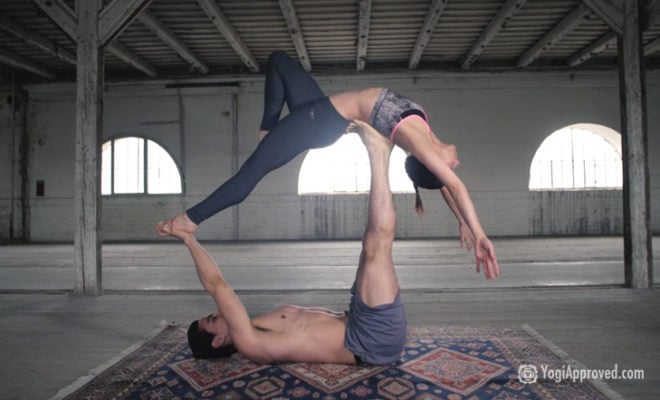
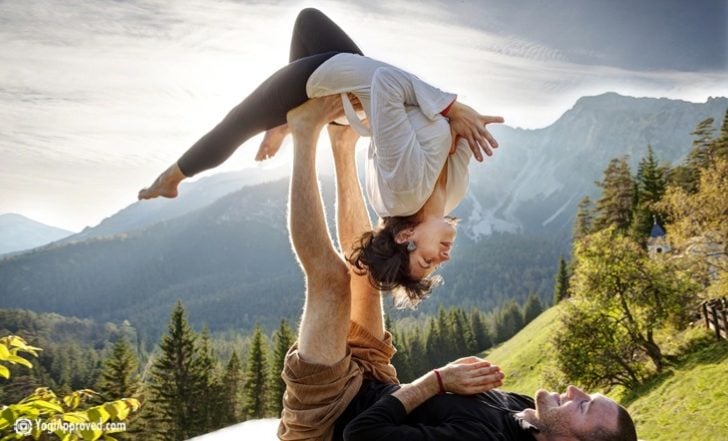
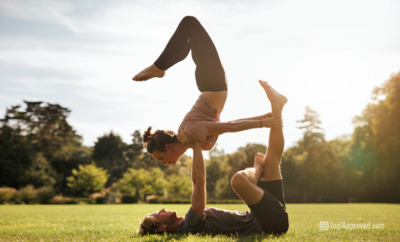
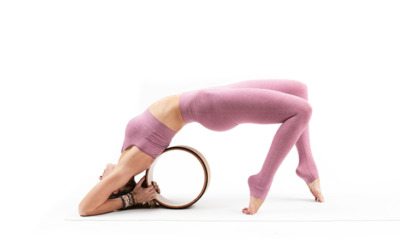
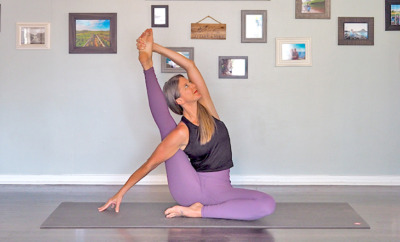
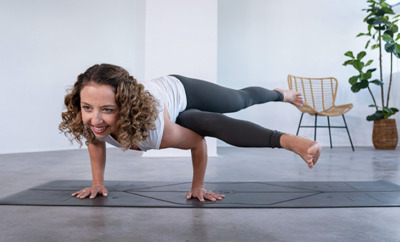
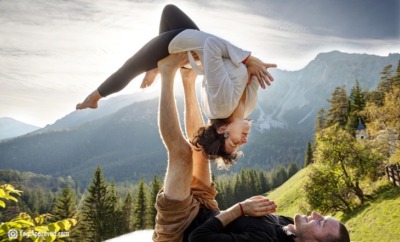




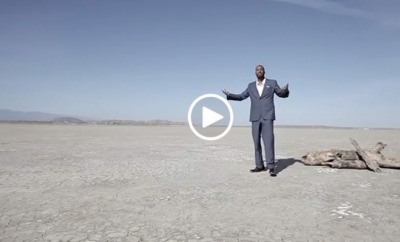


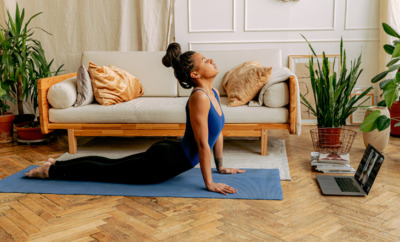














Comments